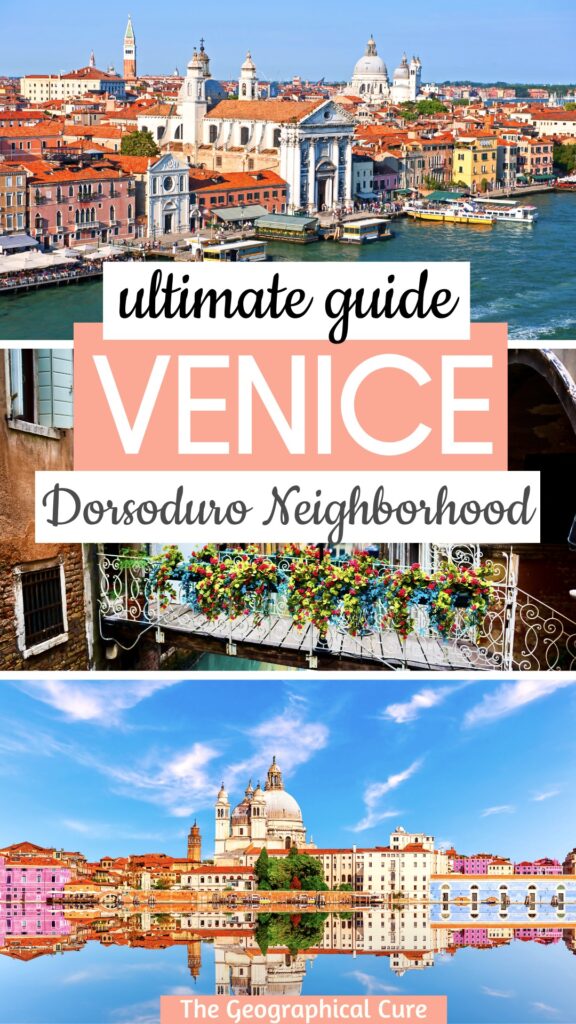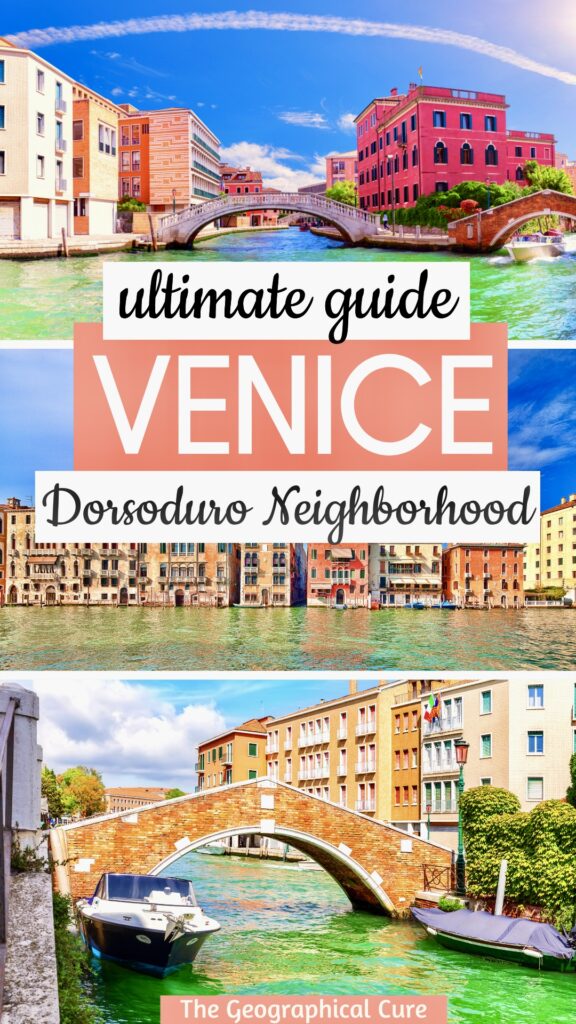Exploring Venice? This is the ultimate guide to the best things to do in the Dorsoduro, Venice’s dazzling neighborhood.
Cradling the southern flank of Venice proper, the Dorsoduro stretches from its smart, artsy eastern district of elegant palazzi to the little visited university are in the west.
The Dorsoduro borders the sestieri of Santa Croce and San Polo. On the other side of the Grand Canal, it faces San Marco. Over the Giudecca Canal, it gazes at the elongated Giudecca Island, which is considered part of Dorsoduro as well.
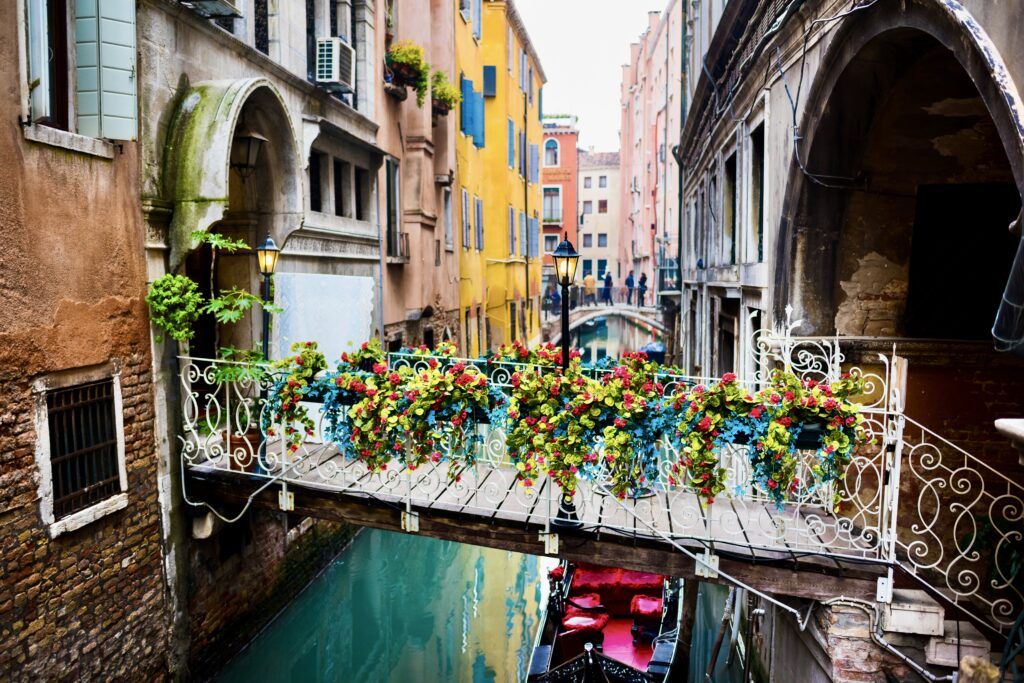
The concentration of art is really outstanding. You’ll find Venice’s best museums and many fine churches and palazzi here, all decorated by the greatest Venetian artists.
The Dorsoduro is chock full of meandering canals, charming bridges, and picturesque streets. It’s a much better spot for a gondola ride than San Marco, less crowded and less expensive,
The Dorsoduro is home to a diverse array of locals, students, and fewer tourists compared to the city’s bustling hotspots. It offers a more authentic Venice experience and a wealth of hidden gems waiting to be uncovered.
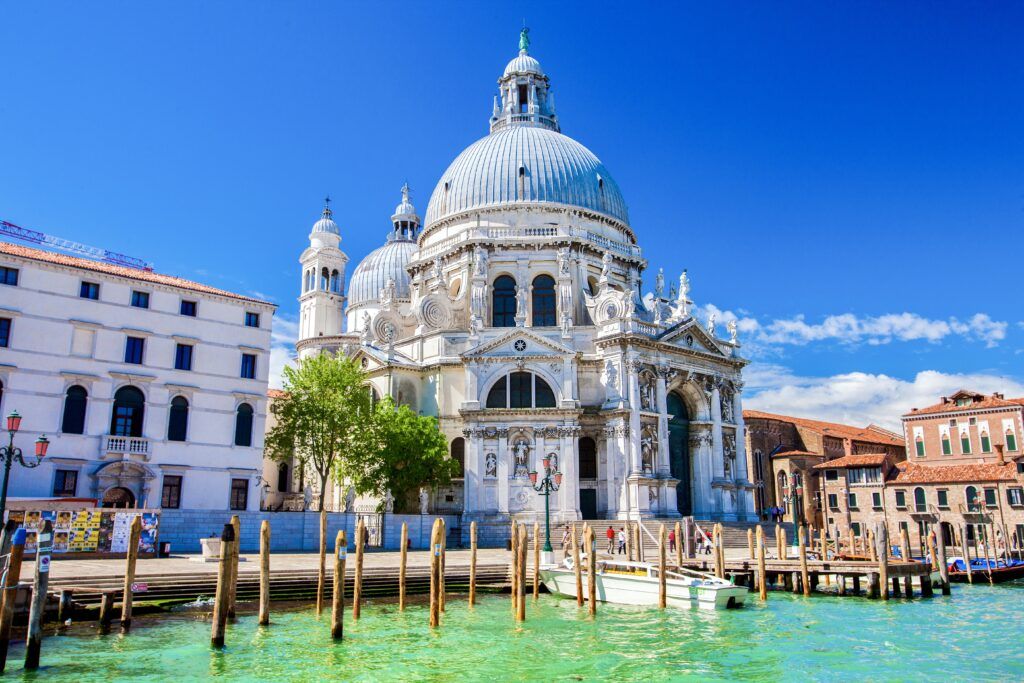
Top Attractions & Things To Do In The Dorosduro
So, here’s my run down of all the top attractions and things to do in the Dorsoduro. Many of these sites are included with the Venice City Pass, the Venice Discovery Pass, or the Venice Museum Pass.
To see it all, you may want to book a Dorsoduro walking tour.
1. Santa Maria della Salute
The Salute is Venice’s most spectacular Baroque church. Queening over the Grand Canal, it’s one of the most recognizable images of Venice.
The church was built between 1631 and 1681, to give thanks to the Virgin Mary for ending Venice’s last bout of the plague. The architect was Baldasarre Longhena, winner of the competition.
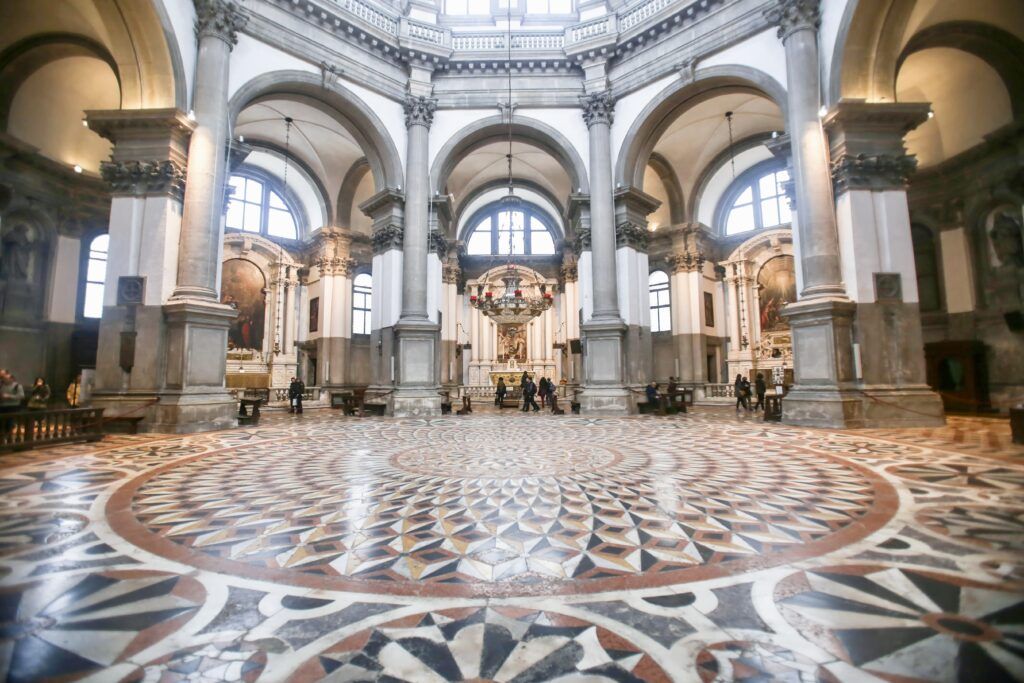
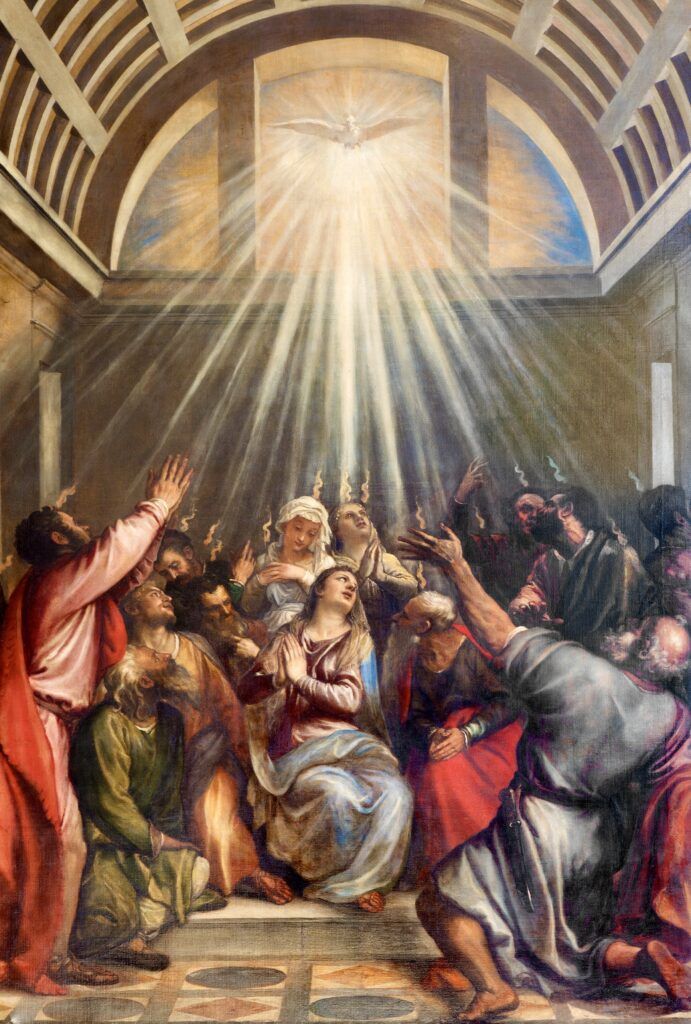
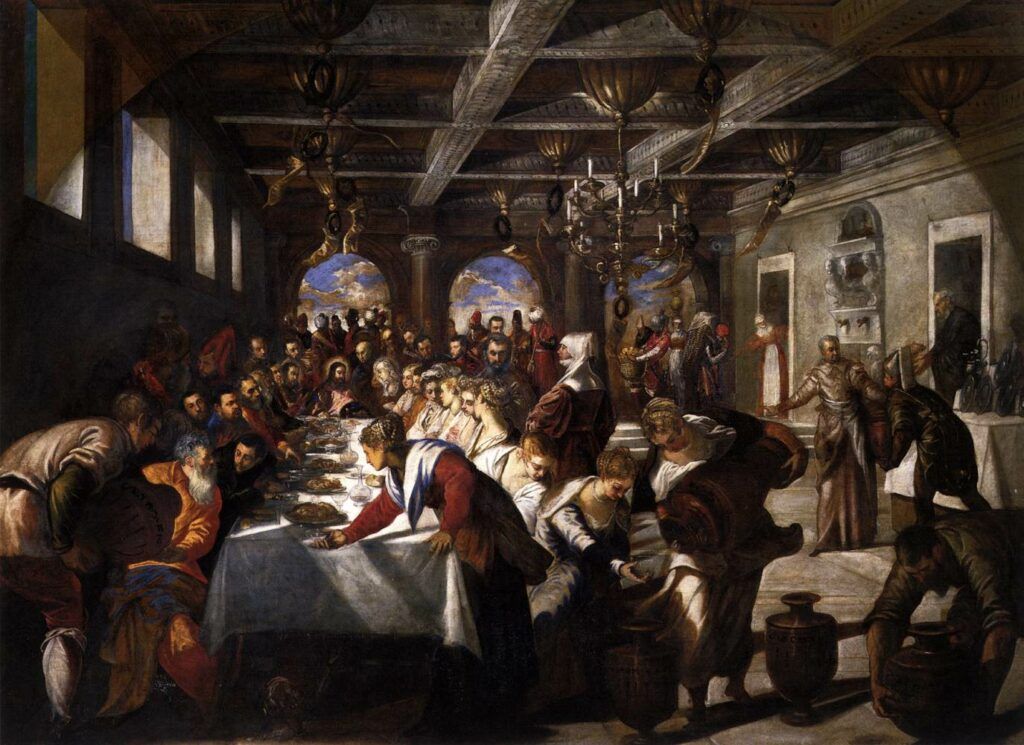
The most distinctive feature of the church is its massive central dome, which rises prominently above the city’s skyline and looks like a crown.
The church’s facade is richly decorated with sculptures, reliefs, and intricate details. It features a monumental entrance flanked by two tall bell towers.
The interior of the church is designed in the shape of a Latin cross, with a grand nave and side aisles.
The high altar is located beneath the central dome. It’s decorated with a beautiful sculptural group by Giusto Le Corte that represents Venice Kneeling before the Virgin and Child.
The best paintings are in the sacristy. There’s a beautiful Marriage at Cana by Tintoretto and three works by Titian on the ceiling. Tintoretto’s piece looks more like a feast at the Doge’s Palace than an illustration of Christ’s life.
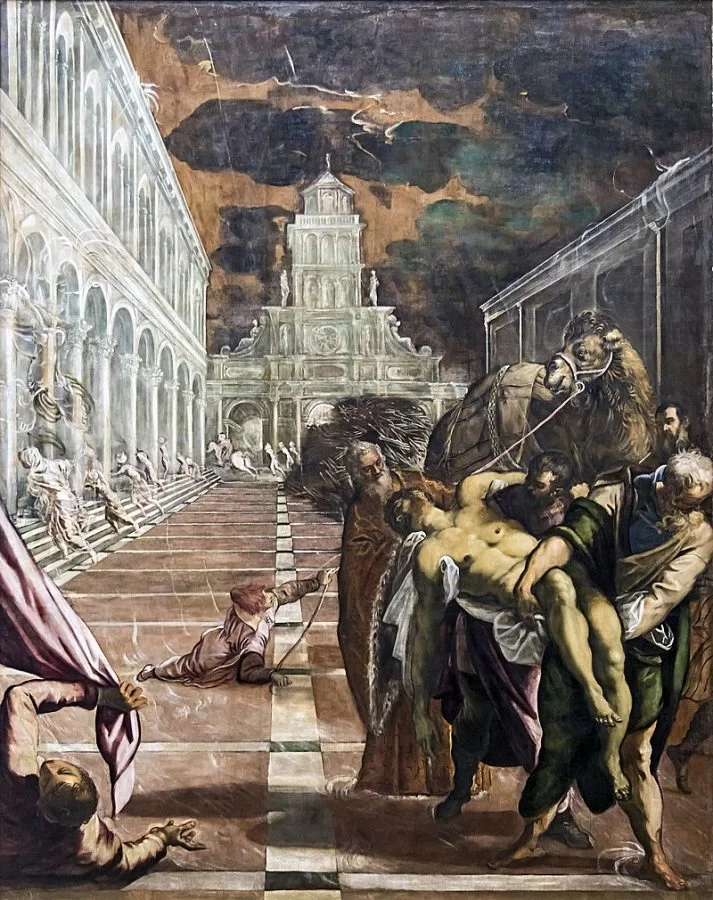
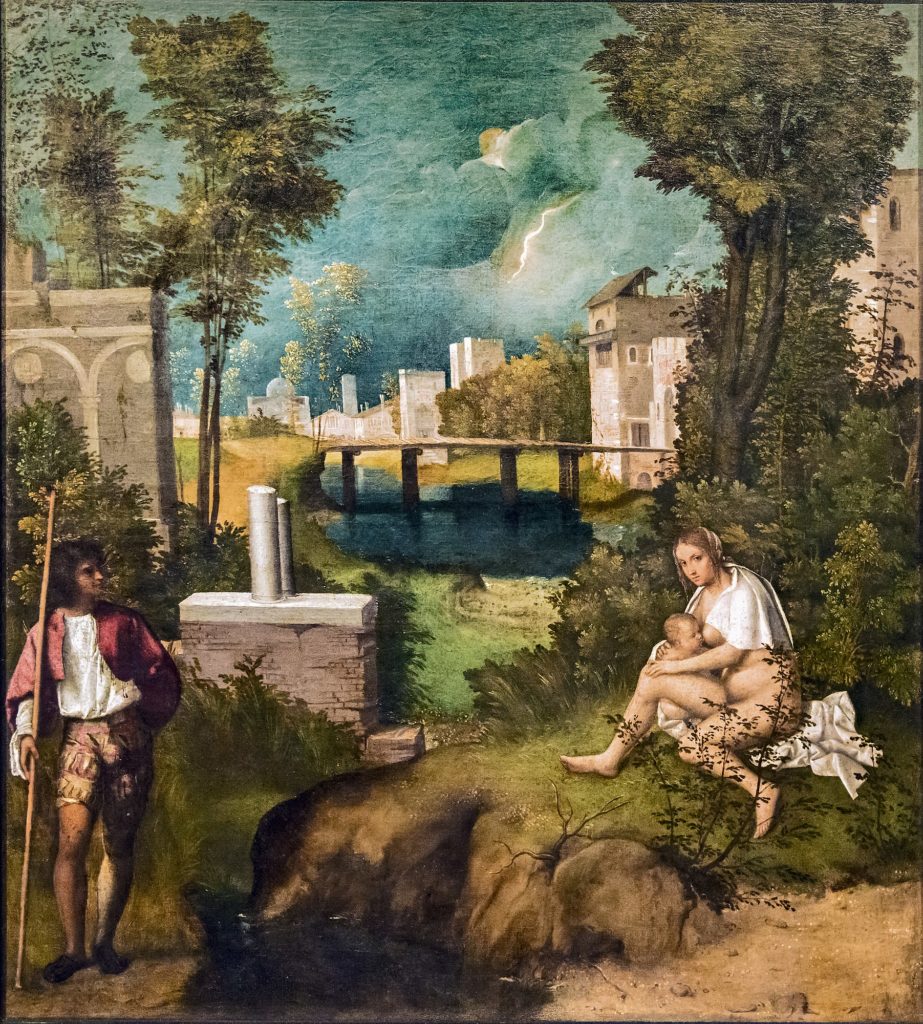
2. Accademia Gallery
The Galleria dell’Accademia is a one stop shop for Venetian painting. It’s a treasure trove of great art and one of the best things to do in the Dorsoduro.
Renowned as Venice’s most esteemed museum and a standout among Italy’s finest museums, the Accademia showcases an unparalleled collection of pre-19th century Venetian paintings.
The museum is arranged chronologically. It traces the evolution of Venetian art from the Middle Ages to the 18th century.
Inside, hundreds of masterpieces await, painted by luminaries like Veronese, Titian, Tintoretto, Tiepolo, Bellini, Canaletto, Carpaccio, and Giorgione.
The must sees are Carpaccio’s St. Ursula series, Veronese’s Christ in the House of Levi, Giorgione’s The Tempest and Old Woman, and Tintoretto’s Transport of the Body of St. Mark.
The Accademia usually remains tranquil and serene even during peak season, unless there’s a special exhibit. You can immerse yourself in exceptional artistry without the bustling crowds found at the Uffizi Gallery or the Vatican Museums.
3. Accademia Bridge
Standing right in front of the Gallerie dell’Accademia, the Accademia Bridge is one of the only four bridges that span the Grand Canal in Venice.
What sets this bridge apart is its construction from wood, a rarity in Venice’s predominantly stone architecture. It replaced a 19th century iron bridge that hindered navigation due to its low clearance.
The bridge is a focal point for capturing memorable snapshots. It offers up unparalleled views, all the way to the iconic Rialto Bridge.
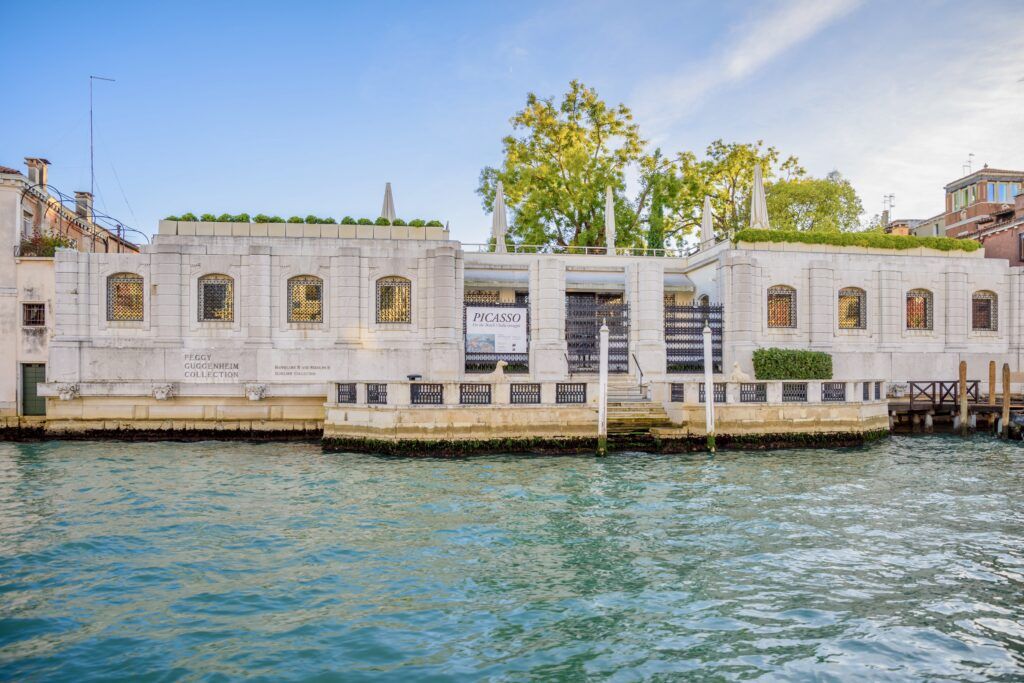
4. Peggy Guggenheim Collection
This remarkable establishment is the third most visited museum in Venice, though it always seems packed to me. It was founded by one of Venice’s most colorful expat residents, Peggy Guggenheim.
She turned up in the lagoon city looking for a home for her sizable modern art collection. Peggy found the perfect base in the Palazzo Venier dei Leoni, an 18th century palazzo on the Grand Canal.
There are some big European names in her collection — Picasso, Brancusi, Max Ernst, Giacometti, and Duchamp. But there are also works by Americans like Jackson Pollock, whose career she helped launch.
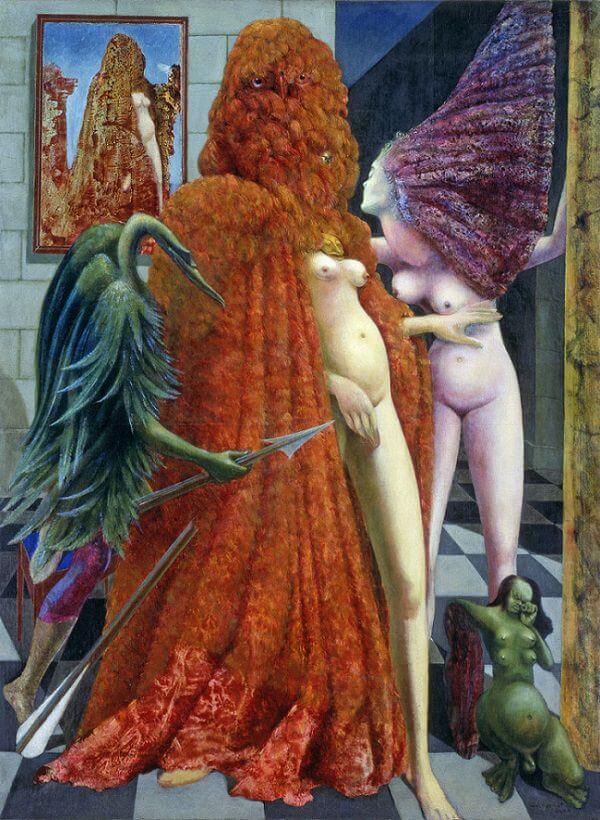
Some of the top masterpieces in the collection include Magritte’s Empire of Light, Max Ernst’s Attirement of the Bride, and Mario Marino’s Angel of the City.
The Marino piece is quite startling, and right on the terrace. A man sits on a horse thrusting his manhood toward the passing vaporetti. Peggy used to unscrew the member and cart it around.
Here’s my complete guide to the Peggy Guggenheim Collection. I advise pre-booking a skip the line ticket. You can also book a 2 hour guided tour.
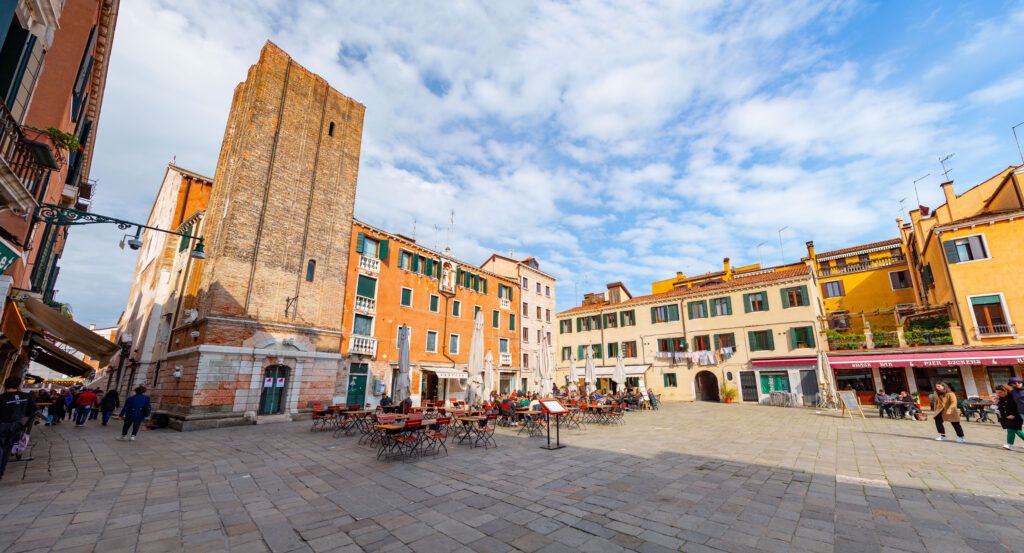
5. Campo Santa Margherita
This is the main square in the Dorsoduro and it is buzzing day and night with both residents and tourists.
It’s a long irregular shaped campo with churches at both ends. There are several ancient palazzi around the square.
The square hosts a variety of markets, including a daily fresh produce market.
It’s also dotted with cafes, restaurants, and bars that spill out onto the square, creating a lively outdoor dining scene.
It’s a great place to relax with a coffee, enjoy a meal, or simply people watch. In the evening, come for a spritz or glass of wine.
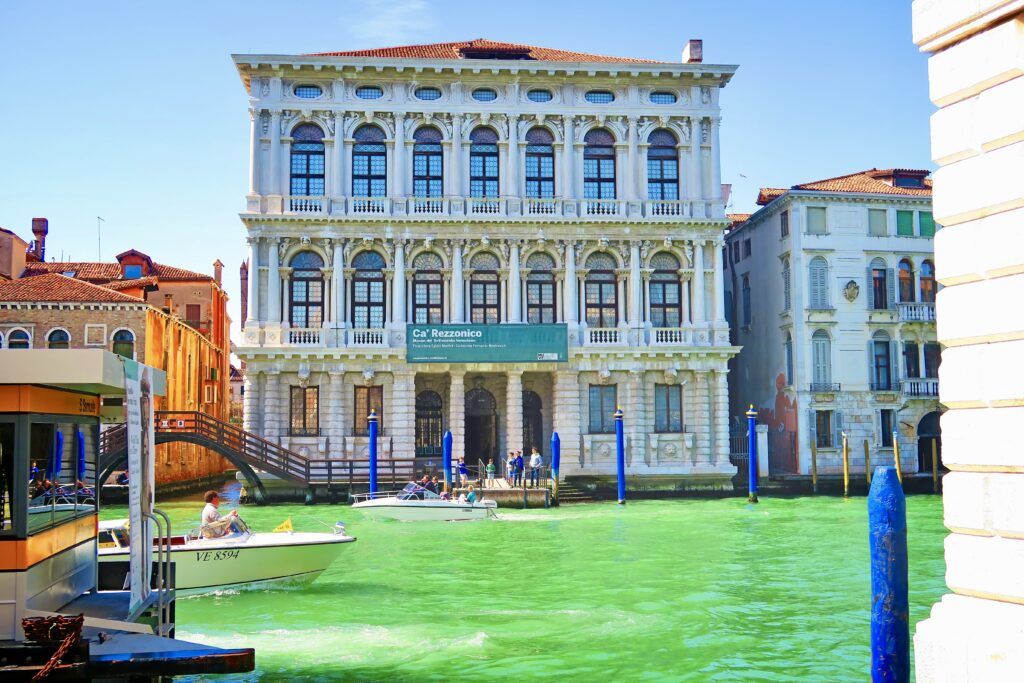
6. Ca’ Rezzonico
Ca’ Rezzonico gives you a glimpse into Venice’s 18th-century “Age of Decadence.”
This museum captures the art and style of that era, housed within a genuine palace. The palace exterior is a symphony of Baroque symmetry.
Stepping inside feels like you’re attending a lavish Rococo party. Elaborate ceilings are adorned with intricate stucco work and frescos.
The art on the walls matches the palace’s grandeur – you’ll spot works by renowned artists like Tiepolo and Canaletto.
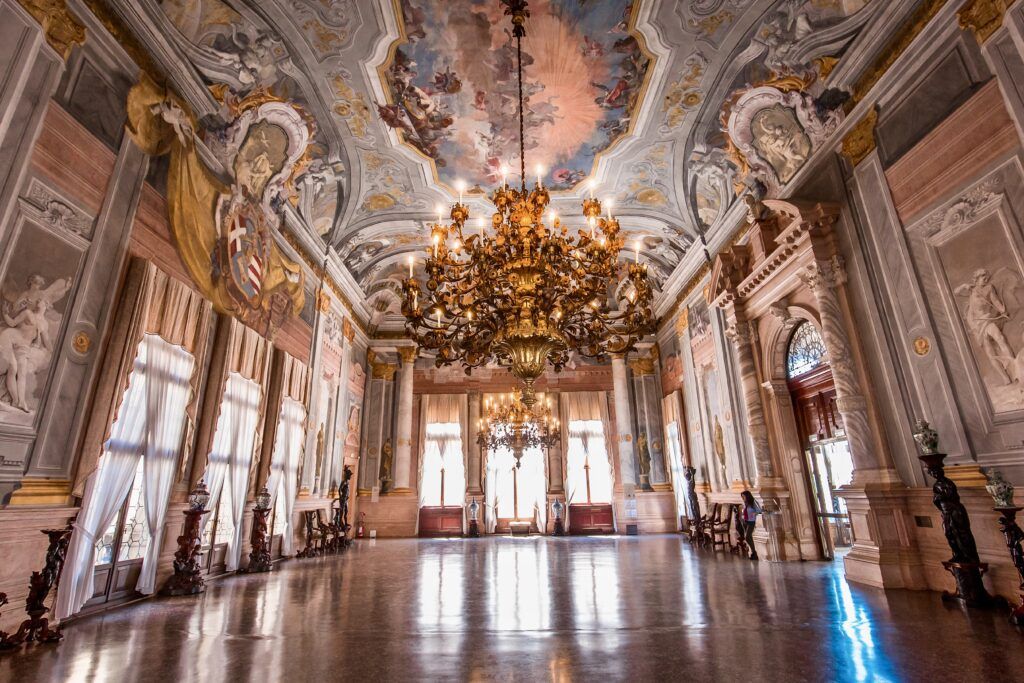
Tiepolo was called upon to paint the ceiling of the Sala del Troon. It’s a beautiful playful composition that’s not easy to forget. The ballroom is also lavishly decorated with frescos by Giovanni Battista Crosato.
There are some historical paintings and some fine genre paintings by Pietro Longhi, pastel portraits by Rosalba carrier, Murano chandeliers, and intricately carved furniture.
You’ll also find the renowned series of Carnival frescoes crafted by Tiepolo. These captivating artworks vividly portray Punchinello, the beloved figure of Commedia dell’Arte, known as Pulcinella in Italian.
If you’re curious about Venice’s history and want to see some beautiful art, Ca’ Rezzonico is a must-visit. It’s a chance to experience the past and its artistic treasures firsthand, with plenty of elbow room besides.
>>> Click here to book a ticket to Ca’ Rezzoncio
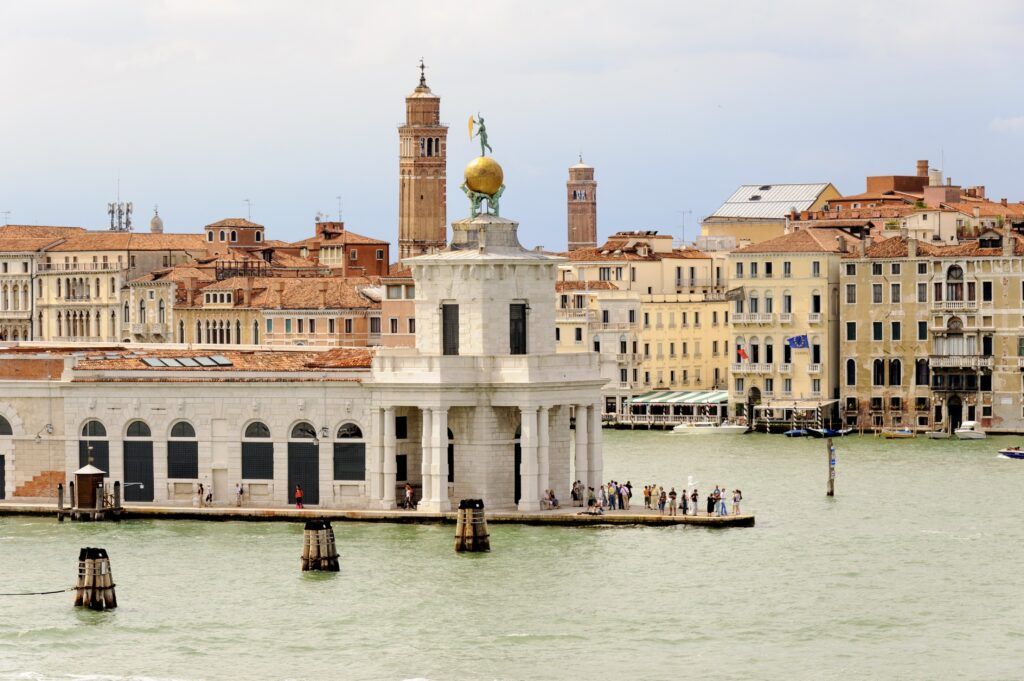
7. Punta della Dogana: Pinault Collection
Because of its strategic location in a triangle of land, the Punta della Dogana served as Venice’s custom house from the 15th century on.
It’s a collection of buildings with the distinctive customs house tower at its tip. The tower is crowned by two statues of Atlas holding a golden globe on their shoulders. The goddess Fortuna stands on one leg n the top, spinning in the wind.
The complex was in use until the 1980s. But then was vacant until 2007.
It was snatched from neglect by the curatorial eye of the billionaire French art collector Francois Pinault. He beat out the Guggenheim Collection for the contract to redevelop the space.
Because it’s once again open, it is possible to stroll around the punta. You’ll have spectacular views across the water at St. Mark’s Basilica.
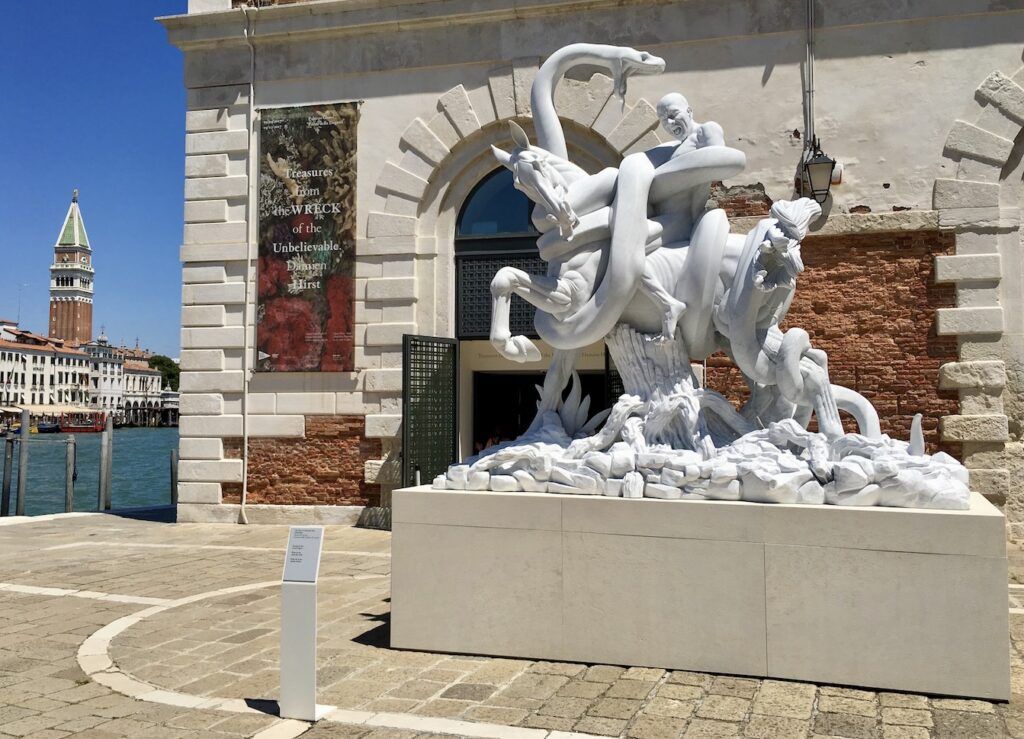
Pinault’s purchase annoyed many Venetians who already thought the Frenchman had more than enough space for his collection at the Palazzo Grass. (Plus, he also just opened a museum in Paris in 2021, the Bourse de Commerce.)
The contemporary art museum opened in June 2009 after a striking reinvention by Japanese archistar Tadao Ando. He masterfully mixed contemporary architectural elements (steel and glass) with historic features (stucco and exposed brick).
The gallery shows revolving themed exhibitions based on Pinault’s immense collection. Now it’s a key player on the European contemporary art circuit.
Damien’s Hirst’s The Fate of a Banished Man sits just outside the door.
>>> Click here to book a guided tour of the Punta della Dogana and the Peggy Guggenheim Collection
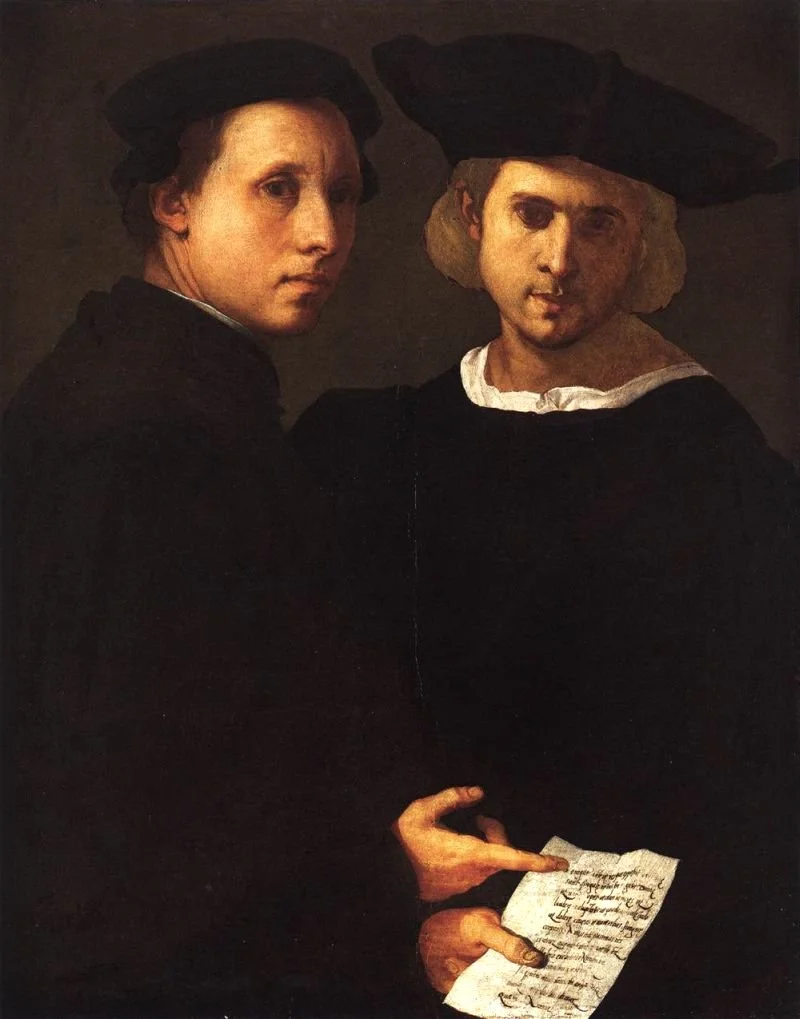
8. Galleria Palazzo Cini
The Galleria Palazzo Cini is a lovely house-turned museum. It’s one of the best things to do in the Dorsoduro, especially for art lovers. But no one has really discovered that fact yet.
It houses the fantastic private art collection of Ferrarese and Tuscan artworks owned by the industrialist Vittorio Cini. The first floor of the museum recreates Cini’s residence.
The core of the collection are paintings, sculptures, porcelain, and glass work.
The top masterpiece is Botticelli’s The Judgement of Paris. It depicts a fateful moment from Greek mythology.
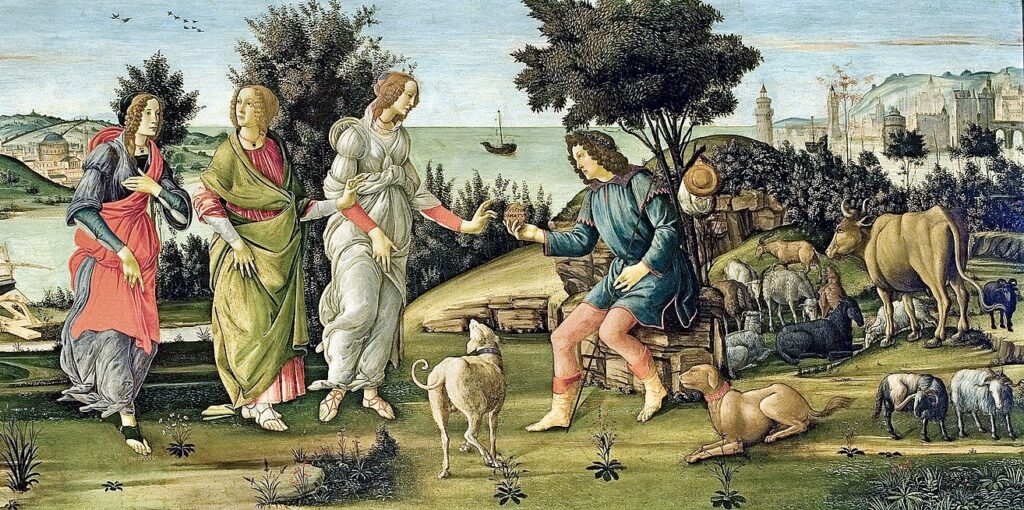
Paris must choose the most beautiful among three Greek goddesses. He hands the golden apple to Aphrodite. She, in turn, promises him the hand of Helen of Troy, an event that kicked off the Trojan War.
Unlike other Botticelli works in more famous museums like the Uffizi, you will have the large painting to yourself and can get up close to inspect it.
It’s the only Botticelli piece in Venice. So if you’re a fan of the early Renaissance artist, that’s reason enough to visit the gallery.
The two other must see paintings are Pontormo’s Portrait of Two Friends and Dosso Rossi’s Allegorical Scene.
>>> Click here to pre-book a ticket
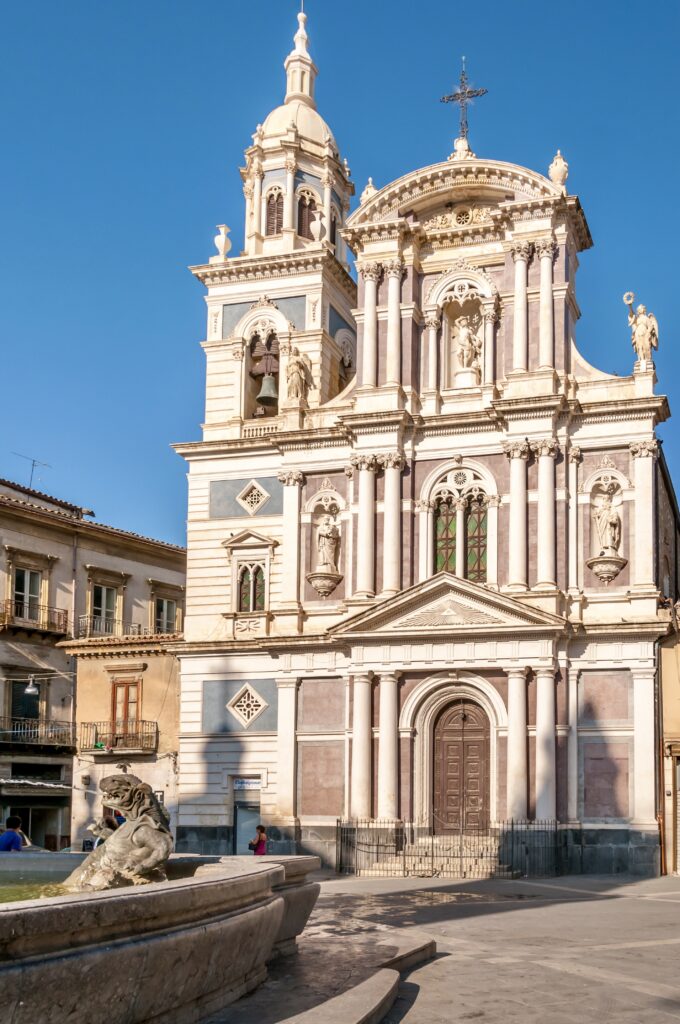
9. Church of San Sebastiano
San Sebastiano boasts perhaps Venice’s most brilliantly colored interior church.
It’s all the work of one artist — Paolo Veronese from Verona. So, of you’re an art lover, the church is one of the best things to do in the Dorsoduro.
Veronese’s first commission was for the sacristy. From then on, there was no stopping him. He essentially became the art director for the church.
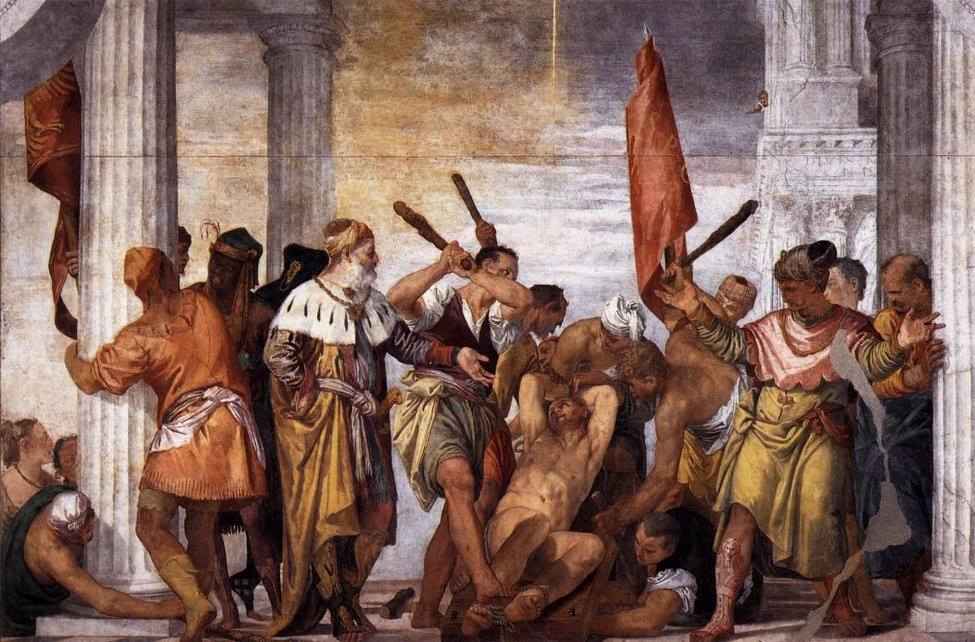
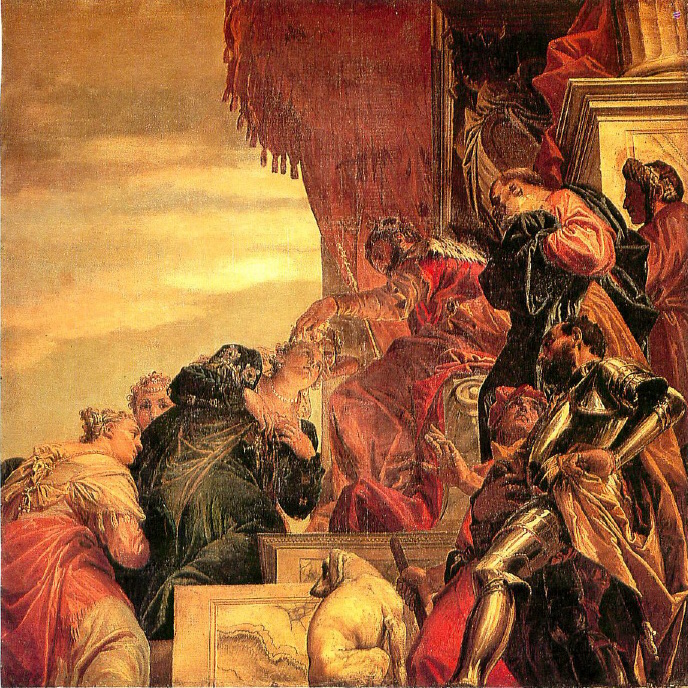
From 1556 to 1565, he completed three large ceiling paintings for the nave of the church, frescos along the upper walls, and huge narrative paintings for the chancel (the sacred space reserved for the clergy).
They are his greatest artworks save for the Marriage of Cana at the Louvre and the Feast in the House of Levi the in the Accademia.
The ceiling paintings were restored from 2008-17 thanks to Save Venice. The now vivid paintings are full of pageantry and shimmering effects. St. Sebastian, wearing his usual arrows, is one of the most striking figures.
Veronese and his brother are also buried in the church. A statue marks Veronese’s tomb.
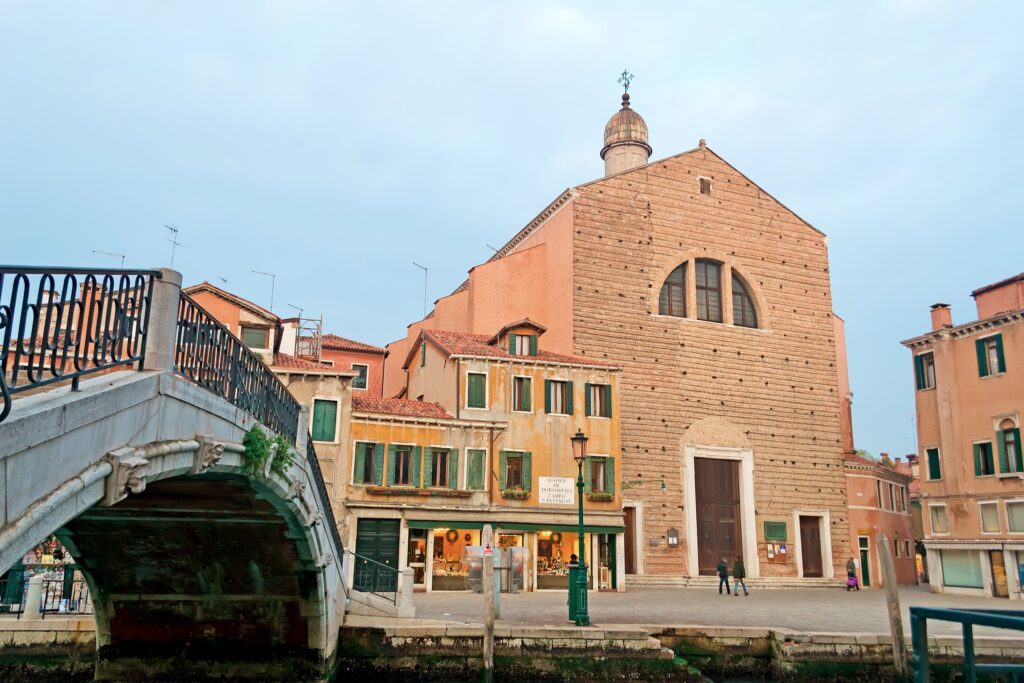
10. San Pantalon Church
This church is dedicated to San Pantalon, a court physician to the Roman Emperor Galerius. He was arrested, tortured, and finally beheaded during Diocletian’s persecution of Christians in the late 3rd century.
Pantalon’s story is depicted on the church’s Rococo ceiling frescos. It’s a huge illusionist work, spread out on 40 panels, by Gian Antonio Fumiani.
It took the artist 20 years to complete the task, between 1680 and 1704. At the end of it, he tragically fell to his death from the scaffolding.
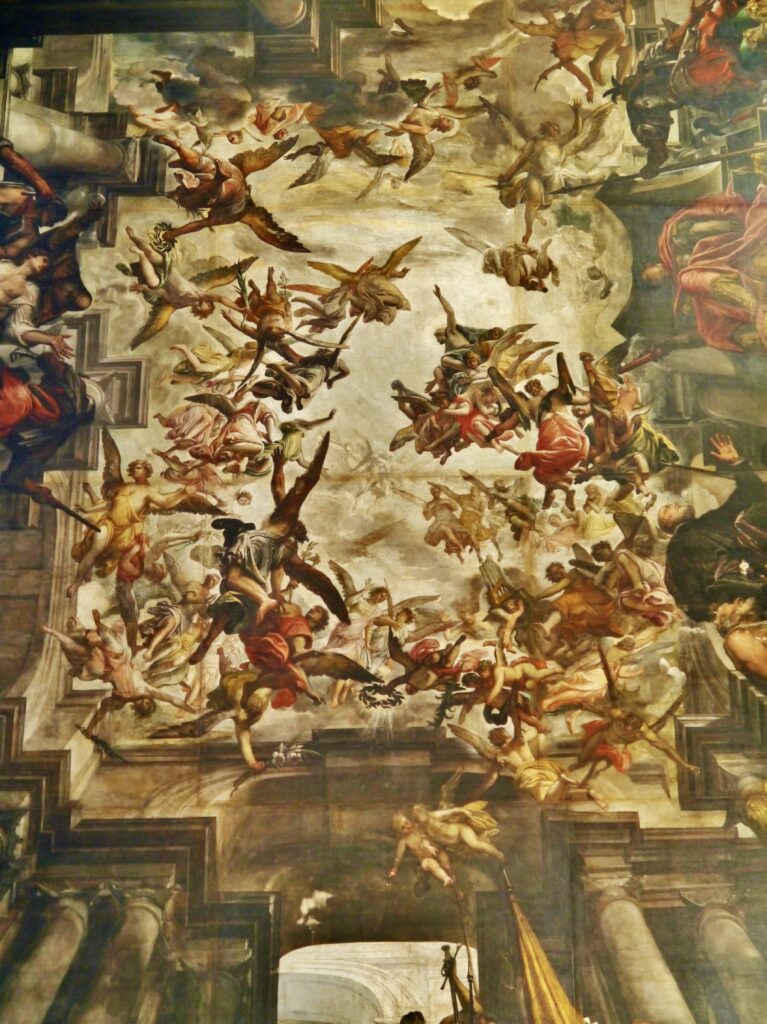
Still, its’s considered one of the world’s largest painting on canvas. To see it properly, put a coin in the donation box by the pews.
There’s another painting in a side chapel of the saint, this time by Veronese, The Miracle of San Pantalon. It was reputably the last thing Veronese every painted.
The church also holds a nail in the Chapel of the Holy Nail. The nail in question is supposedly from the crucifixion. It’s preserved in a richly decorated Gothic altar.
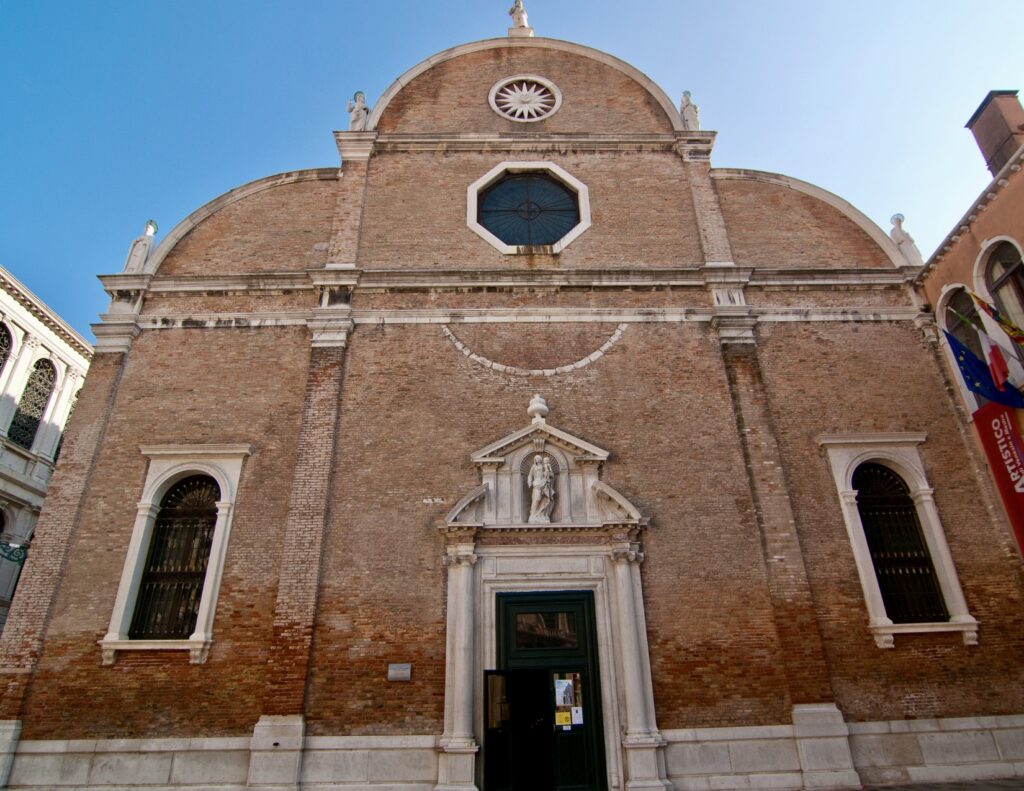
11. Santa Maria dei Carmini Church
This church is officially called Santa Maria del Carmelo. The front facade is a simple brick affair that is not at all fetching. In the back is a tall campanile topped by a statue of the virgin.
Inside, the church is richly decorated and comes to life.
There are 17th century gilt wooden statues over arcades in the nave. And a series of Baroque painting that illustrate the history of the Carmelite order.
The best paintings in the church are Veronese’s Holy Family and St. Nicholas Bari by Lorenzo Lotto. There are also some sculptures and reliefs in the chapel to the right of the high altar.
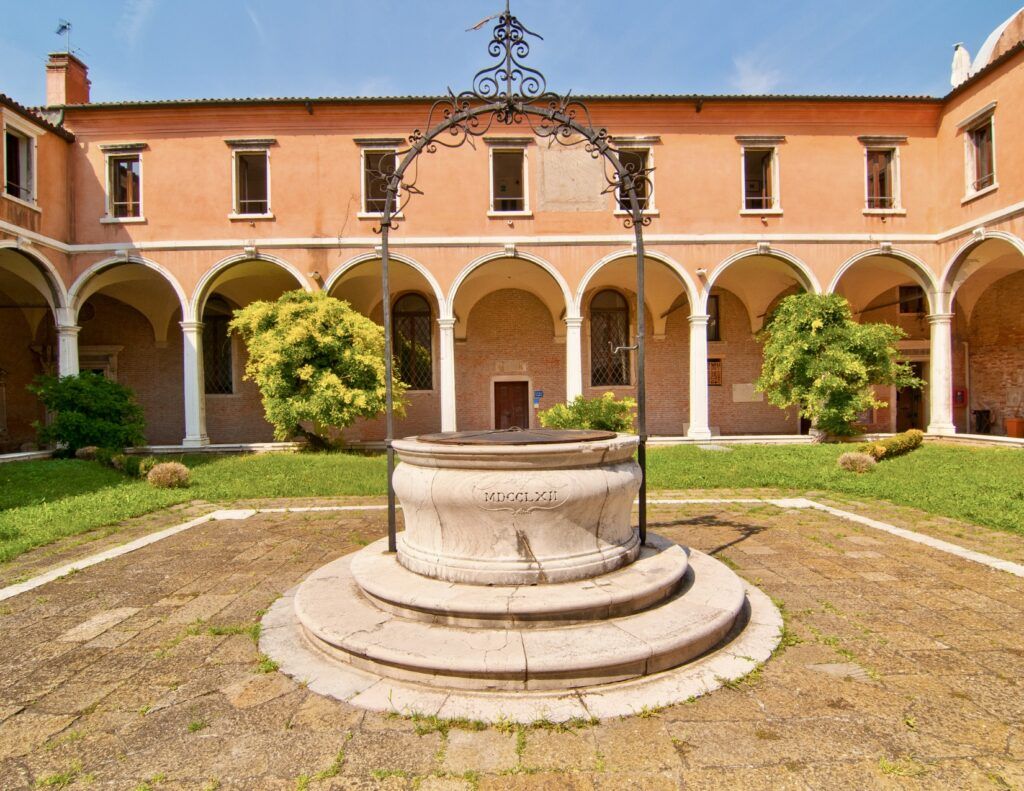
12. Scuola dei Carmini
Begun in 1670, the building housed the Scuola dei Carmini. It’s right next to the Church of Santa Maria dei Carmini.
It was run by the Carmelite order and completely spared from Napoleon’s looting. So, this gives you a good idea what an 18th century Venetian scuola would’ve looked like.
In the main hall of the first floor, Capitular Hall, is one of Tiepolo’s most impressive Venetian ceilings. The airy panels were painted from 1740 to 1743 and have a daring off center composition.
In the two adjacent rooms are wooden sculptures by Giocomo Piazzetta. But the highlight is a wooden Judith and Holofernes sculpture by his more gifted son.
>>> Click here to pre-book a ticket
READ: Guide To The Scuola Grande di San Rocco
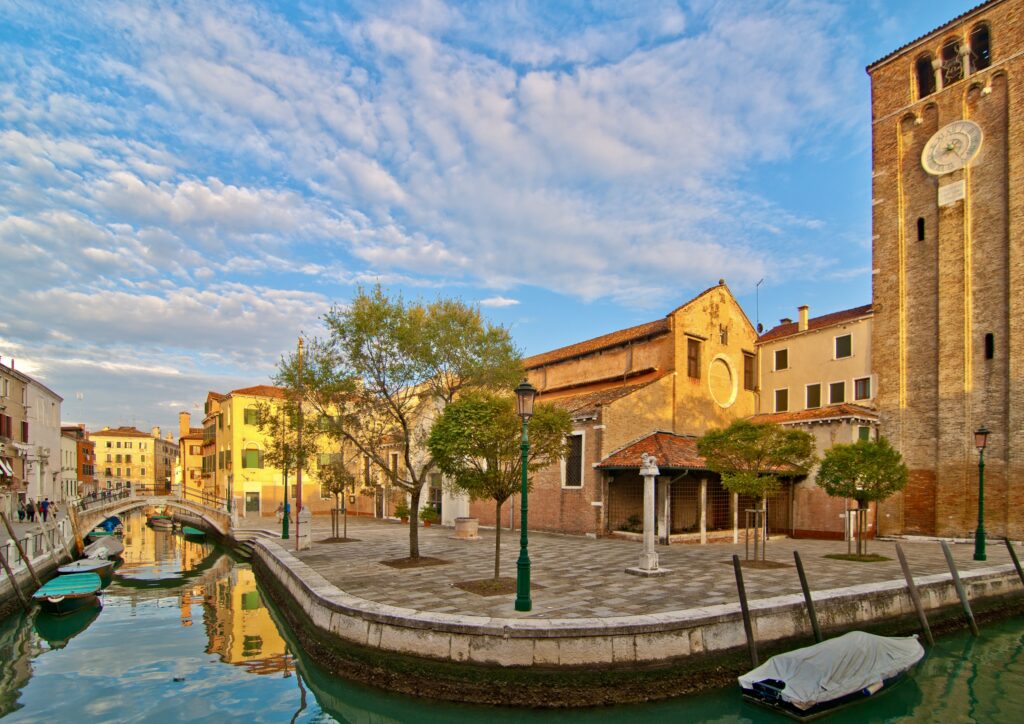
13. San Nicolo dei Mendicoli
This church is a rare 13th-century Veneto-Byzantine example of architecture. When the church underwent a restoration in the 1970s, traces of the original foundations were recovered, confirming its 7th century origin.
The 15th century loggia in the front is a rare extant example of this once common architectural feature. It originally served as a shelter for the homeless.
The interior is a mishmash of architectural and decorative styles. It gives the church the feeling of cluttered charm.
There are two colonnades of stocky columns topped by 14th century capitals. Above are filed 16th century statues of the apostles
There are also some fine wooden sculptures, including one of San Nicolo made in the 15th century.
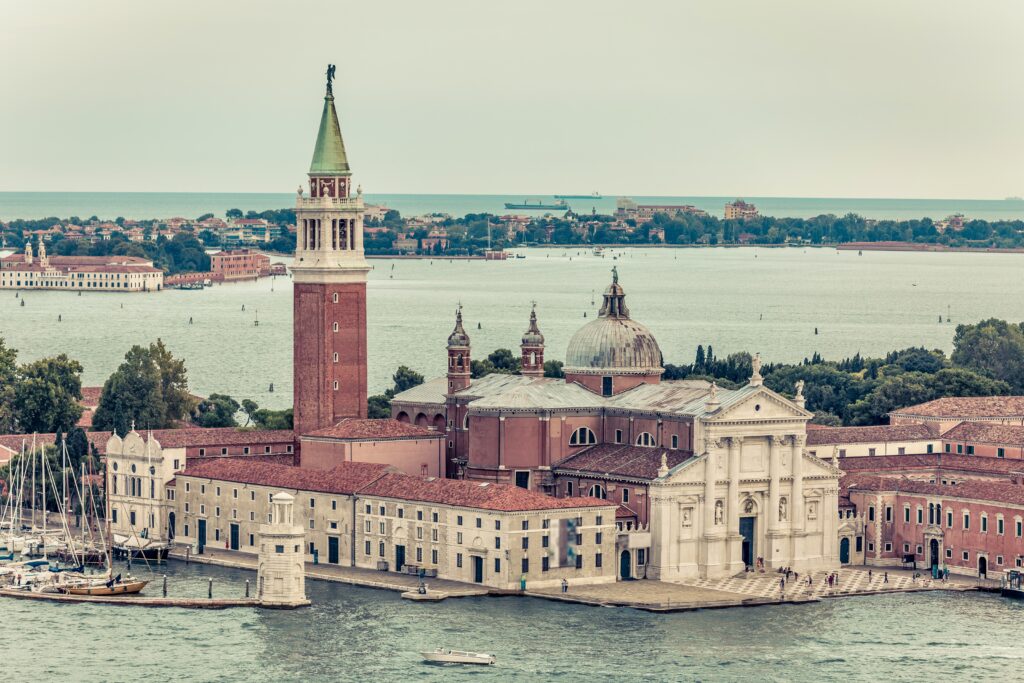
14. Basilica of San Giorgio Maggiore
The Basilica of San Giorgio Maggiore is just a short vaporetto ride away on the tiny island of San Giorgio. Come for the views and stay for the art and architecture.
Its unique location called out for an architectural masterpiece. The famed architect Andrea Palladio delivered a Renaissance beauty.
Inside, the church is white with an airy interior.. The decoration is minimalist, mostly confined to the altars.
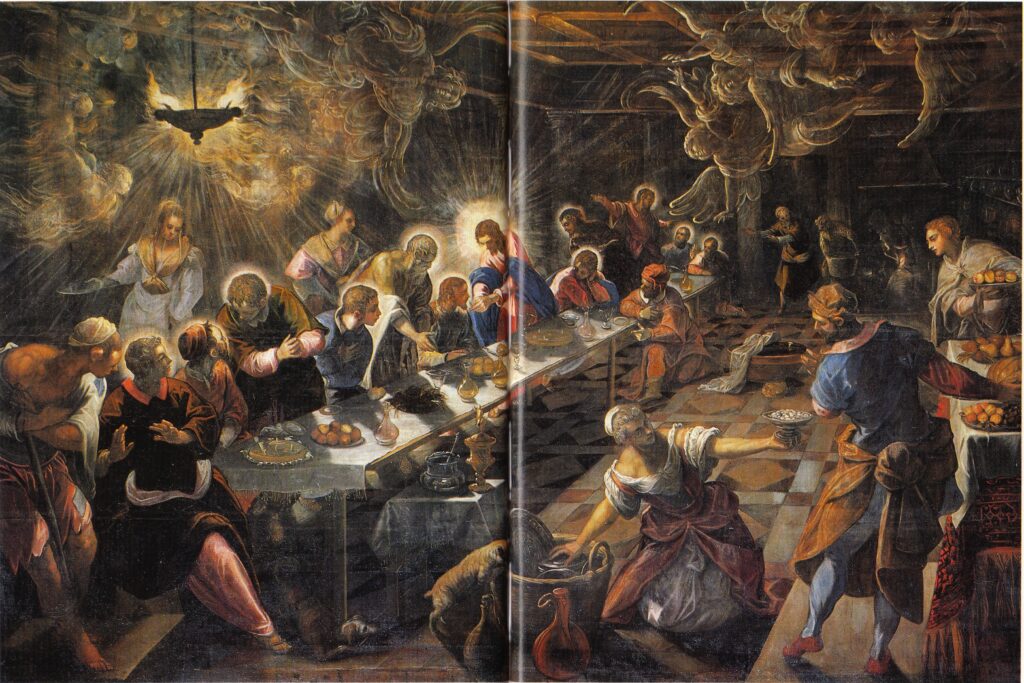
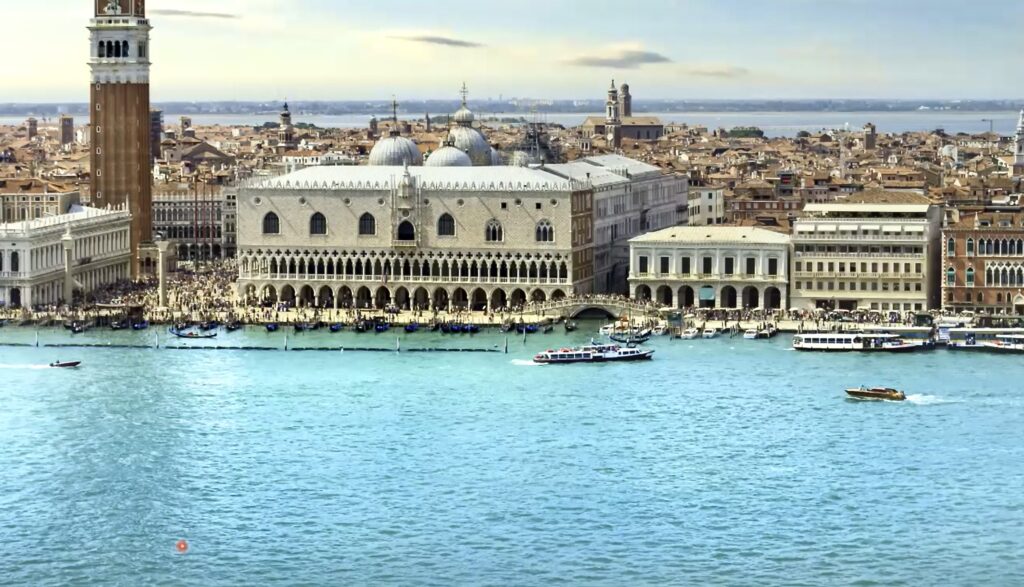
There are several great works on art on view.
There are two paintings by Tintoretto in the chancel, The Last Supper and the Gathering of the Manna. And there is a Jacopo Bassano piece one the altar.
From the left transept, follow the signs to the bell tower, known as the campanile. In front of the ticket office is a huge statue of an angel that once crowned the bell tower until it was struck by lightening.
While the renowned St. Mark’s Bell Tower draws a constant stream of visitors, this campanile is completely under the radar. But it overs a riveting alternative vantage point over Venice that is jaw dropping.
You don’t even have to climb to see it. An elevator zips you to the top.
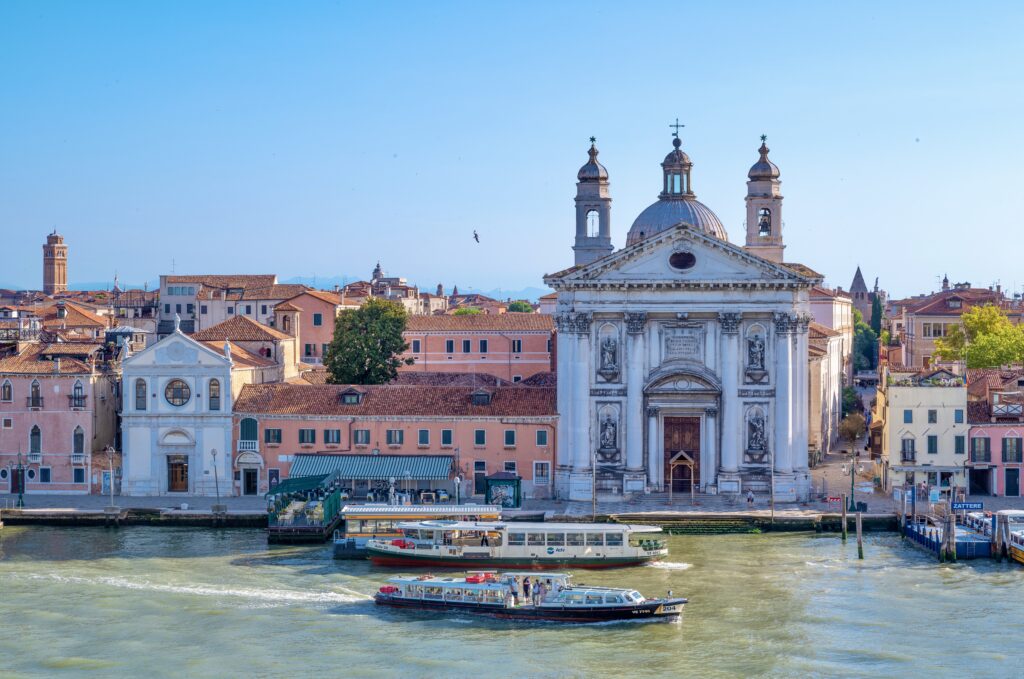
15. Gesuati Church
The Gestate is officially known as Santa Maria di Rosario. The church is a great piece of teamwork between a trio of Rococo artists: architect Giorgio Massari, painter Tiepolo, and sculptor Giovanni Morlaiter.
The facade is Palladian. It has a high degree of symmetry, with a central axis and balanced design elements on both sides.
But it has that old 18th century church vibe with the posturing statues set in niches. And there’s plenty more theatrical sculpture inside, all by Morlaiter.
Tieopolo painted the magnificent ceiling. Three frescos depict Dominican themes. He also painted the surrounding grisailles, which almost look like stucco.
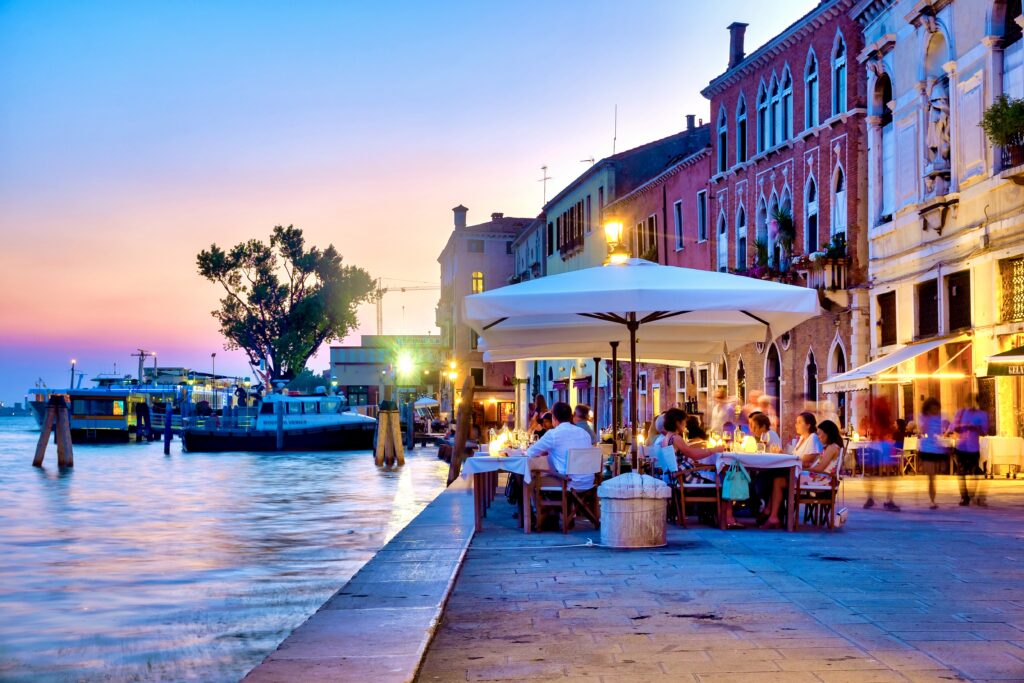
16. Fondamenta delle Zattere
The Zattere is Venice’s finest promenade after the Riva degli Schiavoni. It stretches for a mile on the southern bank of Dorsoduro from San Basilio vaporetto stop to the Punta della Dogana.
The promenade offers up splendid views over the Giudecca Canal and the island of Giudecca.
It’s named after the zattere, rafts, that used to moor there. It’s a favorite strolling ground, punctuated periodically by benches.
There’s not much shade. So you may want to take your promenade either early or late.
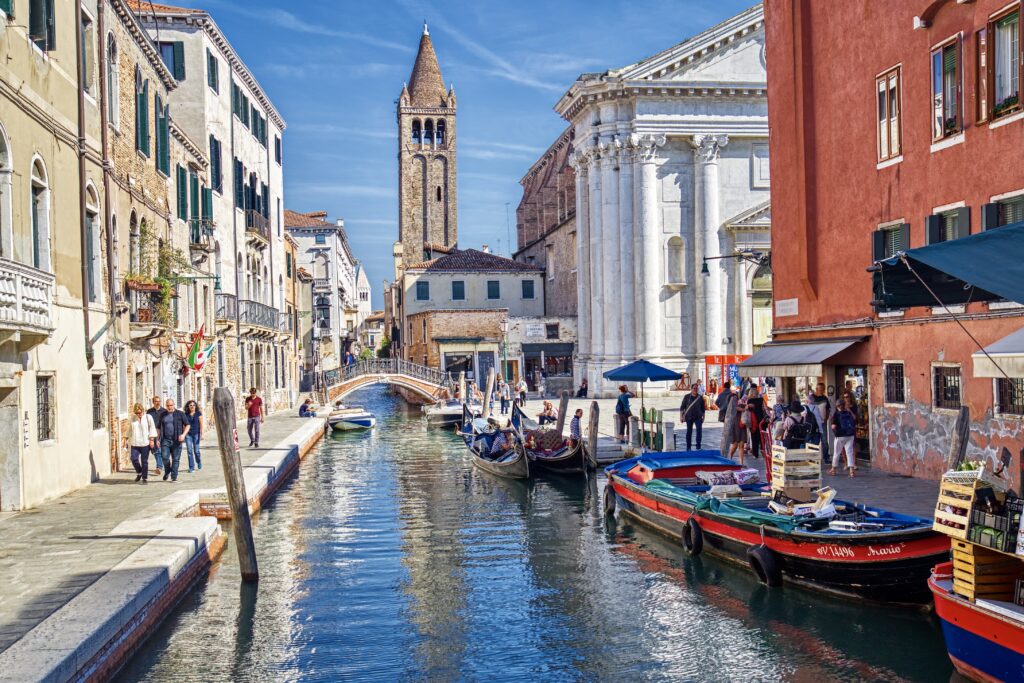
17. Campo San Barnaba
Another of the best things to do in the Dosoduro is to take a stroll through the Campo San Barnaba . Situated conveniently beside or en route to various other Venetian landmarks, it’s a hub of activity.
Just around the corner, you’ll find the intriguing Ponte dei Pugni, or the Bridge of Fists. It’s a historic bridge renowned for its unique history and peculiar purpose.
The square itself is alive with the bustle of shops and eateries, creating a vibrant ambiance. Because of its cinematic allure, the campo has even been a filming location for numerous films, including the iconic Indiana Jones and the Last Crusade.
The deconsecrated Church of San Barnaba stands in the square. It has a grand Neo-Classical facade and inside hosts the Leonardo Exhibition.
You’ll find meticulous reproductions of the ingenious machines inspired by the drawings and writings of the renowned Renaissance artist and polymath, Leonardo da Vinci.
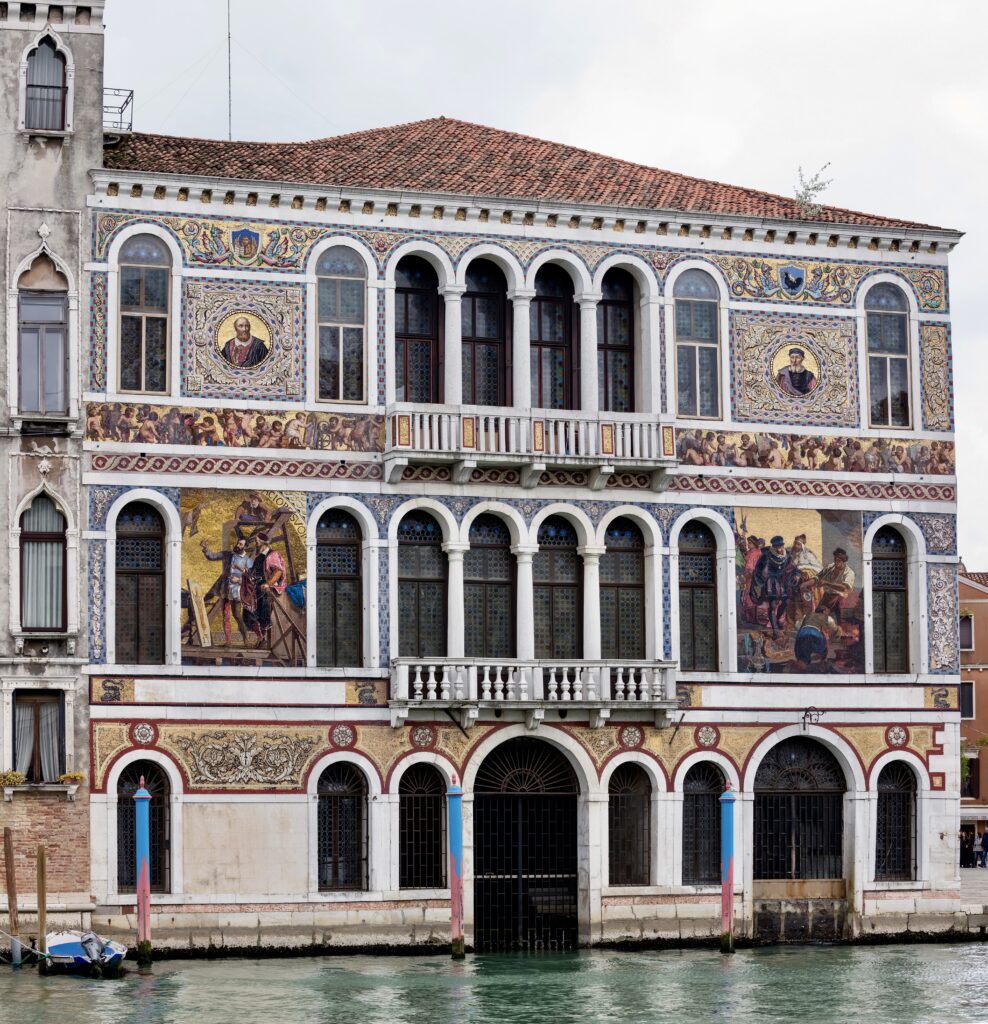
18. Palazzo Barbarigo and Palazzo Salviati
Palazzo Barbarigo and Palazzo Salviati stand out as two of the most beautiful structures along the Grand Canal’s Dorsoduro side. They’re both covered in magnificent mosaic panels.
As you glide aboard the vaporetto from Gallerie dell’Accademia towards the Basilica della Salute, these palaces gradually come into view, offering a captivating spectacle.
Both palaces have intriguing histories — once owned by prominent Murano glass and Venetian mosaic producers. The Renaissance-era Palazzo Barbarigo, a testament to the 16th century, stands as a symbol of artistic legacy. The Palazzo Salviati is more modern.
You can’t go inside. But both provide a glimpse into the application of mosaics on residential buildings. Amidst the grandeur of the Grand Canal, these palaces stand as an exquisite testament to Venice’s artistic legacy.
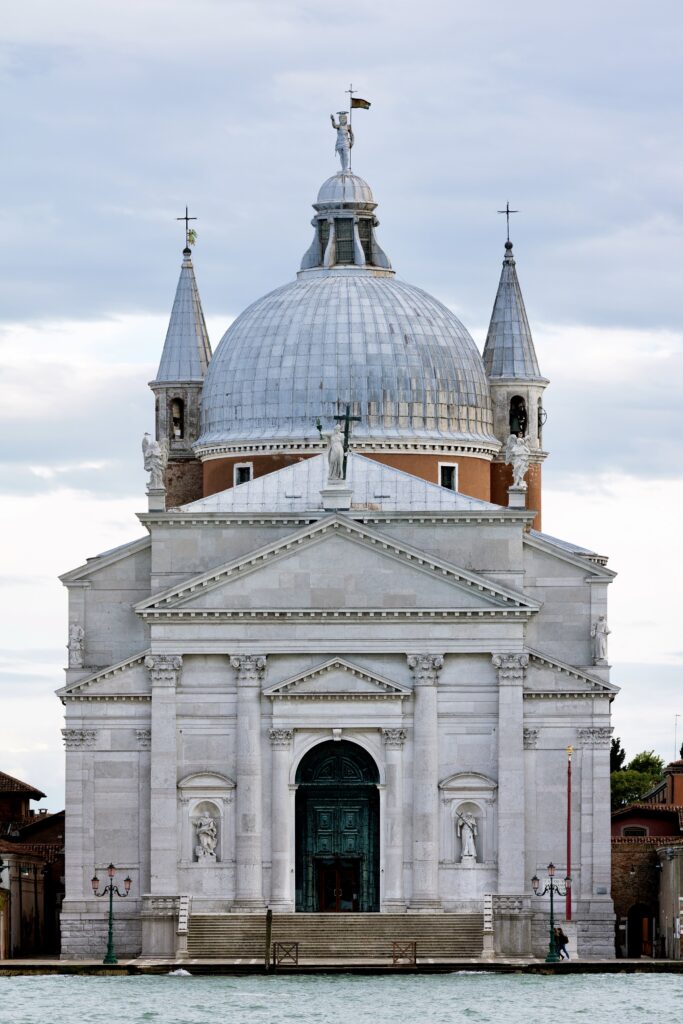
18. Giudecca
Giudecca is an island located just south of the Dorsoduro. You can reach it by vaporetto. While it has its own distinct character and identity, Giudecca falls within the Dorsoduro sestiere administratively.
The main site is the Church of the Holy Redeemer called Il Redentore. It was Venice’s first great plague church. it was built to celebrate deliverance from the bout of 1575-77.
The eye catching building was designed by Palladio. A prominent dome rises from a Greek temple facade. The interior is solemn with a single nave lit by large windows.
If the sacristy is open, you can go in an see paintings by Alvise Vivarini and Veronese.
>>> Click here to book a ticket from San Marco to Giudecca
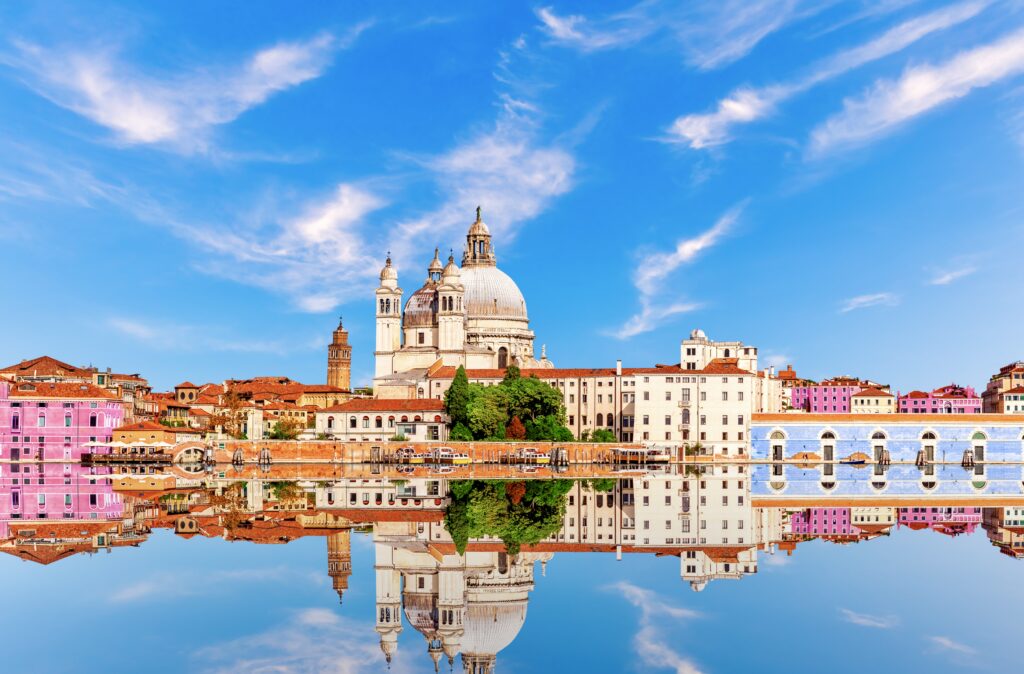
Tips For Visiting The Dorsuduro
Here are some must know tips for visiting the Dorsoduro attractions.
1. How To Get There
If you arrive at Marco Polo Airport, you can take a water taxi, water bus, or book a private transfer to get into town.
If you’re already in Venice and relatively close to Dorsoduro, you can walk to the neighborhood.
The vaporetto is also a convenient way to reach the Dorsoduro. Depending on your starting point, you might take Line 1 or Line 2 vaporetto routes that travel along the Grand Canal. The Dorsoduro area has several vaporetto stops, such as Zattere, Accademia, and Ca’ Rezzonico.
If you prefer a more private and direct mode of transportation, you can hire a water taxi to take you to specific points in Dorsoduro.
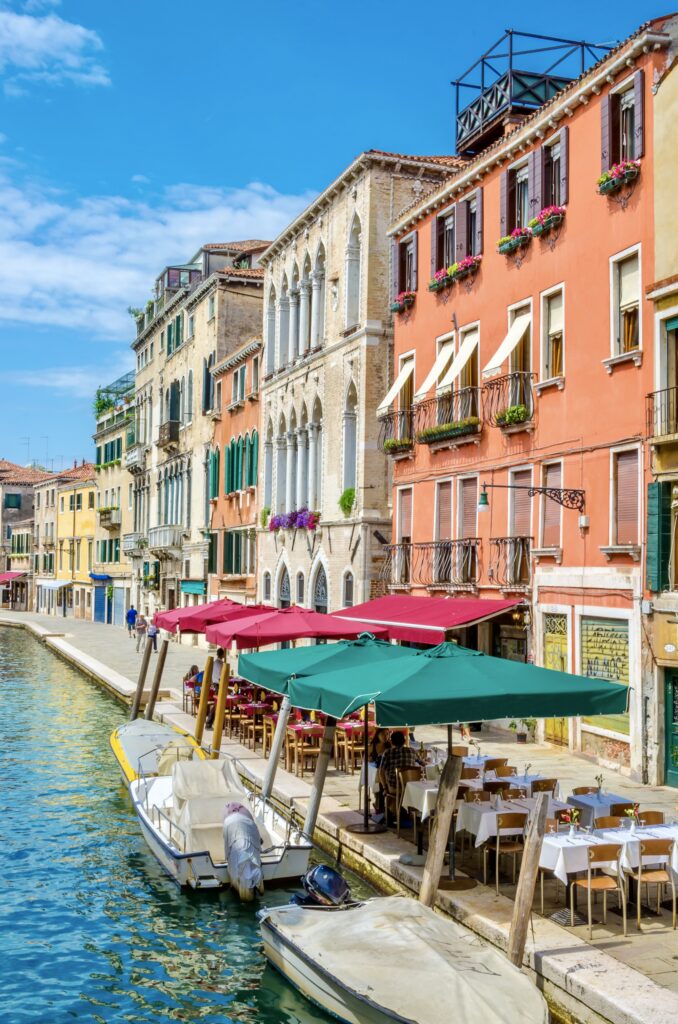
You can also get to the Dorsoduro by traghetto. A traghetto is an unadorned black gondola with two oarsmen, designed for short crossings over the Grand Canal.
There is one traghetto that links San Marco and Dorsoduro. It departs from the station near the Church of Santa Maria del Giglio in the San Marco sestiere. It arrives at the opposite side, leaving you halfway between the Peggy Guggenheim Collection and the Basilica della Salute in Dorsoduro.
2. How To Get Around
Dorsoduro is relatively compact compared to some other neighborhoods in Venice. This makes it easy to explore most of its attractions on foot without the need for extensive transportation.
While Dorsoduro’s labyrinthine layout can be charming, it can also be a bit confusing. Using a map or navigation app can help you navigate the area more efficiently.
Wear comfortable shoes. You’ll encounter many bridges, all with steps.
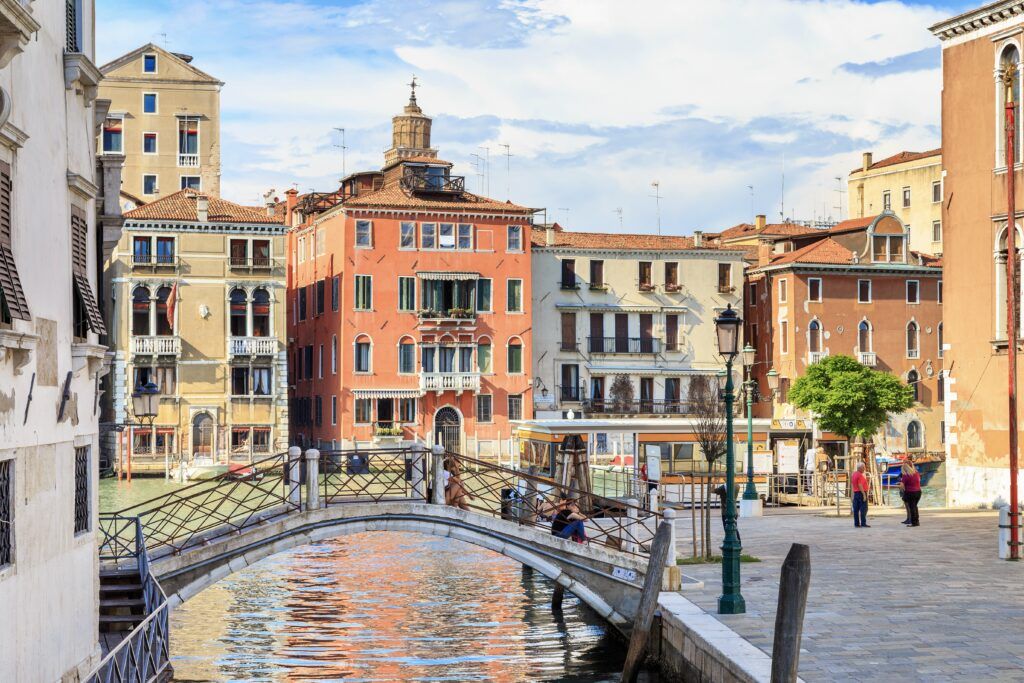
3. Where To Eat
Compared to other places in Italy (Bologna for instance), Venice is not particularly famous for its food. And it’s easy to go wrong with overpriced tourist restaurants.
Yet, there are some good places in the Dorsoduro if hunger calls.
And you should definitely get some cicchetti. They are small, delectable snacks similar to tapas. They are often enjoyed with a glass of wine at local bacari (wine bars).
Some of the local specialities in Venice are sarde in saor (marinated sardines, risotto al nero di seppia (risotto with squid ink), baccalà mantecato (whipped salted codfish ), fritto misto (mix of fried seafood and vegetables), and bigoli in salsa (thick pasta served with onions and salted fish).
Here are some places to check out:
High End: Al Gondolieri, Riviera
Trattorias & Osteria: Osteria al Squero, Pane, Vino e San Daniele, Oniga, Ai Artisi, la Bitta, Osteria ai Pugni
Casual Cafes & Bars: Cafe Rosso, El Chioschetto, Cantinone, Cantine del Vino gia Schiavi
Gelato: Gelateria il Doge, Gelateria Nico, Grom
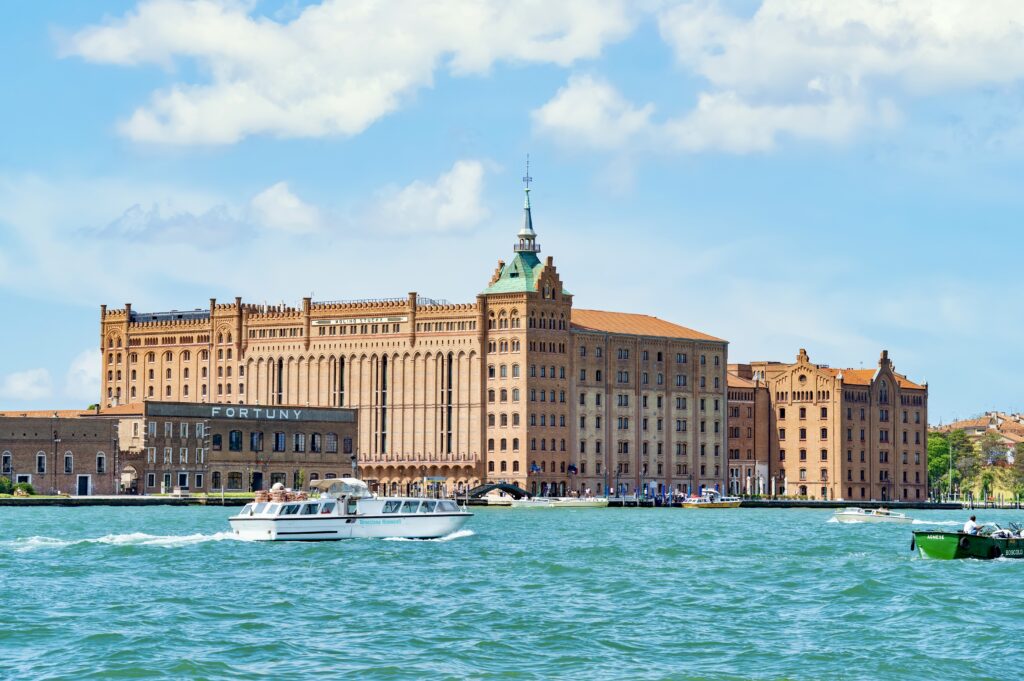
4. Where To Stay
The Dorsoduro is a fantastic area to stay in Venice. After a day full of busy sightseeing, you can come home to a more laid back and quiet area.
Hilton Molino Stucky is located on Giudecca. It’s a massive turreted and crenellated building that’s the largest building in the lagoon. It was transformed into a luxury hotel and has a rooftop Skyline Bar and swimming pool (rare for Venice).
From its prime position on the eastern tip of the Giudecca island, the Belmond Cipriani exudes an air of la dolce vita style glamour.
The splurge worthy hotel has private gardens, views, and is a favorite of A list celebrities. A private motorboat will take you to San Marco.
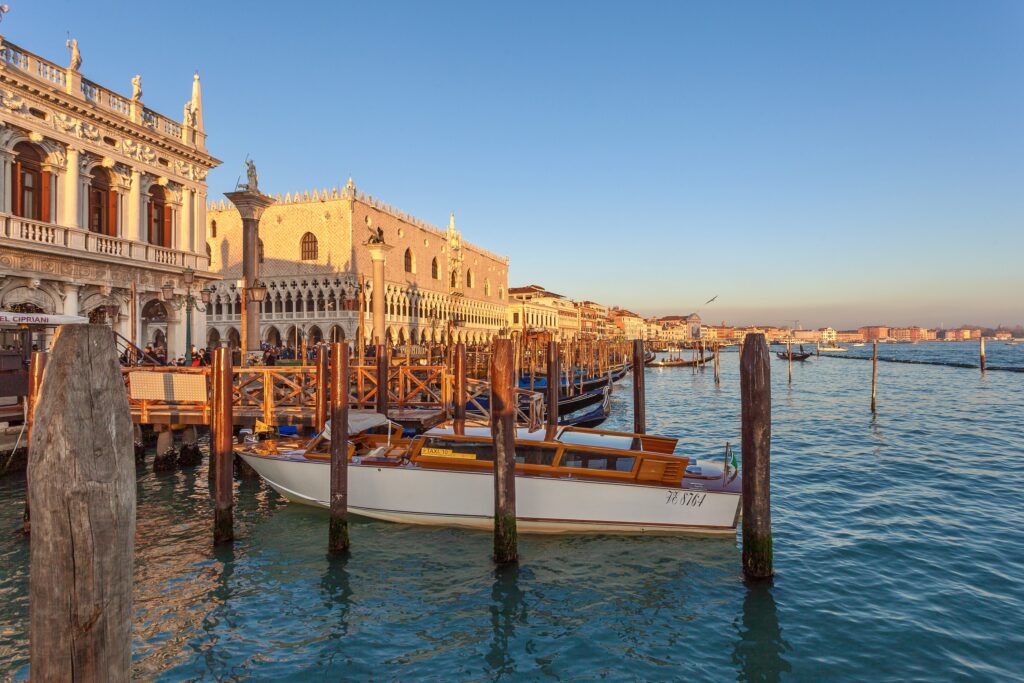
Hotel Nani Mocenigo Palace is a lovely new 4 star hotel. It’s housed in a Gothic palace and decked out in Murano chandeliers.
The Hotel Palazzo Stern is an elegant hotel, with rooms done in pastel shades in a Venetian style. There’s a rooftop terrace with a jacuzzi with amazing views.
Ca Maria Adele is a pretty award-winning boutique hotel near Santa Maria della Salute. Its 12 rooms are decorated in an ultra romantic Venetian style.
I hope you’ve enjoyed my guide to the best things to do in the Dorosduro. You may enjoy these other Venice travel guides and resources:
- One day in Venice itinerary
- 2 days in Venice itinerary
- Guide to St. Marks’ Basilica
- Guide to the Accademia Gallery
- Guide to the Doge’s Palace
- Top Attractions on the Grand Canal
- Guide to the Peggy Guggenheim Collection
- Venice art bucket list
- How many days to spend in Venice?
- 30+ tips for visiting Venice
- Guide to the Frari Church
If you’d like to see all the top attractions in the Dorsoduro, pin it for later.

